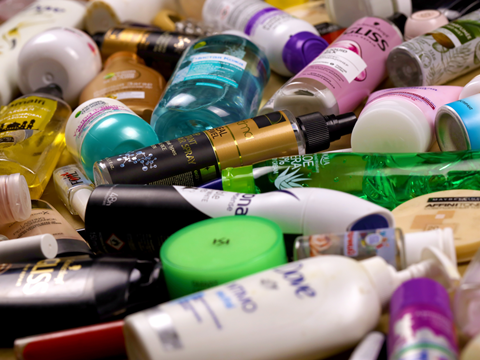
WWF has revealed The Blueprint for Credible Action on Plastic Pollution, a guidebook designed to help companies of any size address their plastic waste footprints for environmental, economic, and reputational gain.
As explained by Erin Simon, vice president and head of Plastic Waste and Business at WWF, single-use virgin plastic has been utilized in packaging since the 1940s – yet it is reported that more plastic products have been produced in the last fifteen years than in the entire 20th century combined. Even so, infrastructure and waste handling capacity have not expanded accordingly, meaning 75% of all plastic ever produced has apparently become pollution.
National and voluntary initiatives are said to have increased by 60% in the last five years, and for many of the largest fast-moving consumer goods companies, overcoming plastic packaging waste is highlighted as a priority in their sustainability initiatives. In practice, however, WWF notes that companies often do not know where to start.
The Blueprint for Credible Action on Plastic Pollution aims to guide companies in addressing their plastic footprint and making a measurable impact. Based on WWF’s ten-plus years of collaborative experience, it seeks to help its users initiate or expand a plastic strategy; identify gaps and expansion or collaboration opportunities; and maintain leadership.
The guidebook aims to break the process down into “a more digestible, stepwise approach”, offering real-life examples and additional resources for reference. Companies are encouraged to build internal awareness of the plastic crisis, map out their value chains, and measure their plastic footprint; this information can then be used to set “realistic yet ambitious goals” to maximize impact.
From this point, the guidebook explains, collaboration and advocacy for broader interventions can begin. Erin Simon asserts that, in order to become leaders in plastic reduction, companies should “work with others to amplify [their] impact and foster knowledge sharing, resource pooling, and the collective commitment to sustainable plastic use”.
Investments can also be made outside a company’s direct operations to address the root causes of plastic pollution in pursuit of “holistic and lasting change”, the guidebook says. Addressing plastic pollution is uplifted as a “smart business decision”, ensuring that companies align with upcoming regulations and keep up with evolutions in the packaging landscape.
It adds that business can cement their reputation, build trust with stakeholders, capture sustainable consumer markets, and achieve consumer loyalty by following through on their plastic reduction practices.
“Even though many of the largest fast-moving consumer goods companies rank tackling plastic packaging waste as a top sustainability issue, they often don’t know where to begin to deliver the lasting and effective results our planet needs,” says Simon. “That’s why WWF created the Plastic Blueprint – to help both companies initiating a new plastic strategy and those seeking to maintain leadership or expand existing strategies.”
The announcement follows last year’s fourth annual report of WWF’s ReSource: Plastic programme. Members such as Amcor, P&G, Starbucks, McDonald’s Corporation, and The Coca-Cola Company were reported to achieve a general decrease in the use of ‘problematic plastics’ between 2021 and 2022, yet the plastic weight in their aggregate portfolio was said to have increased.
On the other hand, while WWF felt that the latest round of negotiations for a Global Plastics Treaty at INC-4 ‘yielded some success’, it warned that negotiations ‘moved at too slow a pace’ to match current pollution levels. With over 15 million tonnes of plastic feared to have leaked into the ocean since negotiations began, it argues that negotiators are falling behind on the scale and speed needed to tackle the current crisis.
If you liked this story, you might also enjoy:
How are the top brands progressing on packaging sustainability?
The ultimate guide to global plastic sustainability regulation












No comments yet